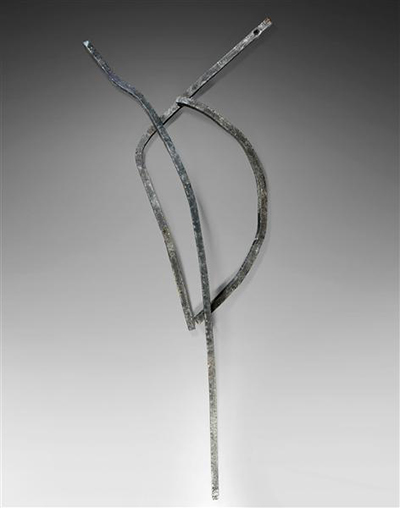Abstract art is a technique artists use to express what they feel. The art doesn't have to represent something already existing, and neither does it have to look perfect. Typically, representational art involves looking at something and drawing a replica.
But, things are different when an artist chooses to venture into abstract art. With that said, The Signal by Constantin Brancusi is the perfect example of abstract art. The Signal is a sculpture made with iron. Typically, it looks like a leaf lying on a ground with a thin branch crossing over it. Interestingly, the statue looks like some of the modern and trending necklaces for the ladies. The material, texture, and composition of the Signal bring out the fascination Brancusi had at the time. Nonetheless, it isn't elementary to understand what Brancusi thought when he came up with this piece, but it would look spectacular on a greyish wall.
The Signal is a clear definition of how Constantin used mediums to achieve fundamental yet concealed reality meticulously. He took days to polish artwork, and it is evident with how his collection looks perfect. Moreover, considering that he implemented direct curving using metal, bronze, marble, stones, and wood, he certainly took his time to achieve gallery-worthy art, including this particular piece.
Marcel Duchamp believed in the works of Brancusi. He promoted his work among friends and professionals. Furthermore, he curated two shows in the USA, one of the largest markets for Constantin artwork. Brancusi also drew motivation from the works of other artists such as Robert Morris and Donald Judd. To top it all, Brancusi drew his inspiration from his Romanian origin. Considering he walked from his home to Paris, he came across ancient artifacts. It's also possible he drew inspiration from an egg as a symbol of the beginning of a life or end, depending on the perspective he was presenting. For example, the Sleeping Muse looks like a curving from an egg.
The curving of Brancusi certainly inspired other artists. For instance, Richard Serra closely followed Constantin’s work and even termed it as a future reference for the modern artist. It was exceptional. Isamu Noguchi also worked with Brancusi between 1927 and 1929. He later continued to practice what he'd learned from Constantin, and his work became prevalent among other artists such as Paul Manship, Hugo Robus, and more. Auguste Rodin, Fernard Leger, and Paul Gauguin are some of the other artists who got inspiration from Brancusi. Just like Pablo Picasso revolutionized painting, Constantin Brancusi did sculpture. Indeed, his work is what Richard Serra defined as a "handbook of possibilities for sculpture."




